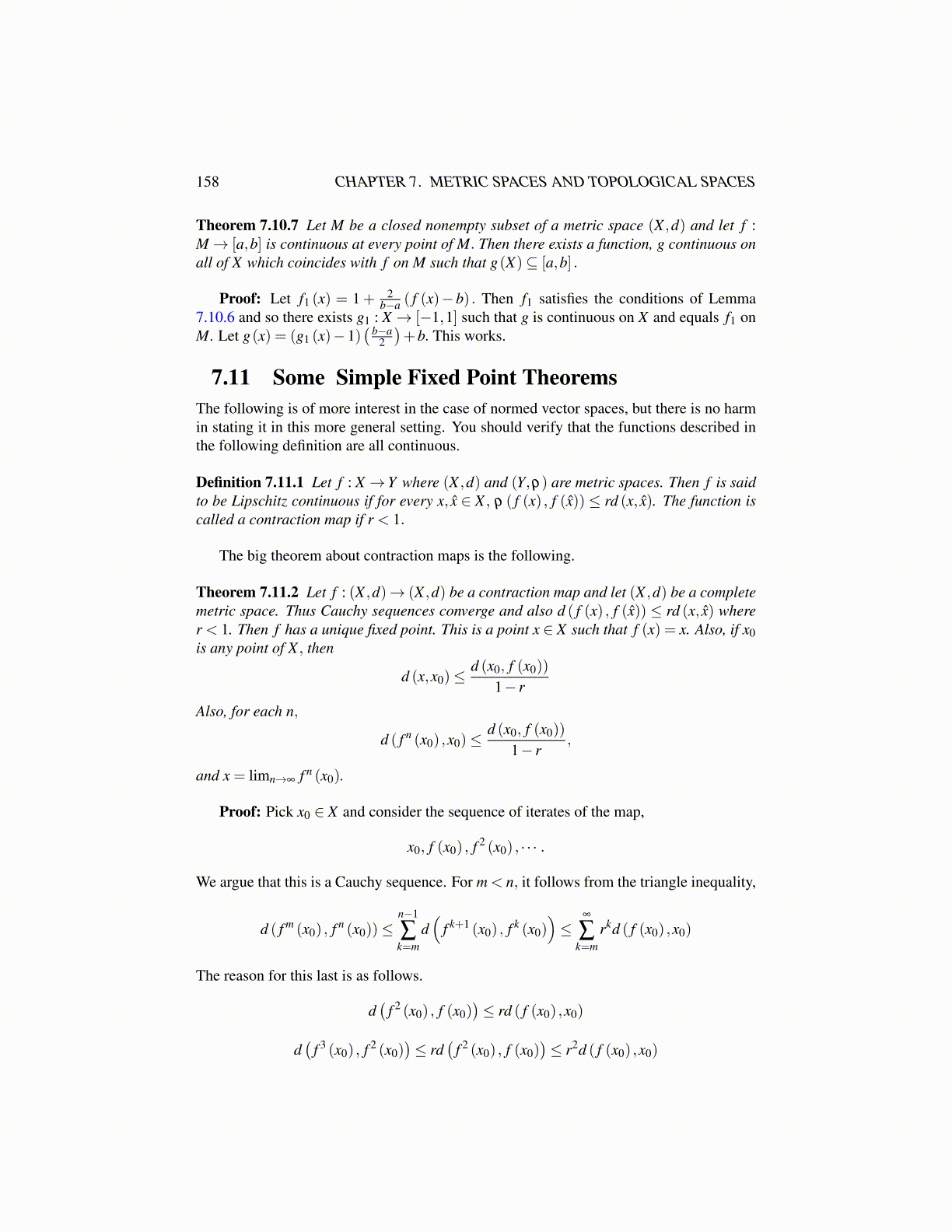
158 CHAPTER 7. METRIC SPACES AND TOPOLOGICAL SPACES
Theorem 7.10.7 Let M be a closed nonempty subset of a metric space (X ,d) and let f :M→ [a,b] is continuous at every point of M. Then there exists a function, g continuous onall of X which coincides with f on M such that g(X)⊆ [a,b] .
Proof: Let f1 (x) = 1 + 2b−a ( f (x)−b) . Then f1 satisfies the conditions of Lemma
7.10.6 and so there exists g1 : X → [−1,1] such that g is continuous on X and equals f1 onM. Let g(x) = (g1 (x)−1)
( b−a2
)+b. This works.
7.11 Some Simple Fixed Point TheoremsThe following is of more interest in the case of normed vector spaces, but there is no harmin stating it in this more general setting. You should verify that the functions described inthe following definition are all continuous.
Definition 7.11.1 Let f : X →Y where (X ,d) and (Y,ρ) are metric spaces. Then f is saidto be Lipschitz continuous if for every x, x̂ ∈ X , ρ ( f (x) , f (x̂)) ≤ rd (x, x̂). The function iscalled a contraction map if r < 1.
The big theorem about contraction maps is the following.
Theorem 7.11.2 Let f : (X ,d)→ (X ,d) be a contraction map and let (X ,d) be a completemetric space. Thus Cauchy sequences converge and also d ( f (x) , f (x̂)) ≤ rd (x, x̂) wherer < 1. Then f has a unique fixed point. This is a point x ∈ X such that f (x) = x. Also, if x0is any point of X , then
d (x,x0)≤d (x0, f (x0))
1− r
Also, for each n,
d ( f n (x0) ,x0)≤d (x0, f (x0))
1− r,
and x = limn→∞ f n (x0).
Proof: Pick x0 ∈ X and consider the sequence of iterates of the map,
x0, f (x0) , f 2 (x0) , · · · .
We argue that this is a Cauchy sequence. For m < n, it follows from the triangle inequality,
d ( f m (x0) , f n (x0))≤n−1
∑k=m
d(
f k+1 (x0) , f k (x0))≤
∞
∑k=m
rkd ( f (x0) ,x0)
The reason for this last is as follows.
d(
f 2 (x0) , f (x0))≤ rd ( f (x0) ,x0)
d(
f 3 (x0) , f 2 (x0))≤ rd
(f 2 (x0) , f (x0)
)≤ r2d ( f (x0) ,x0)